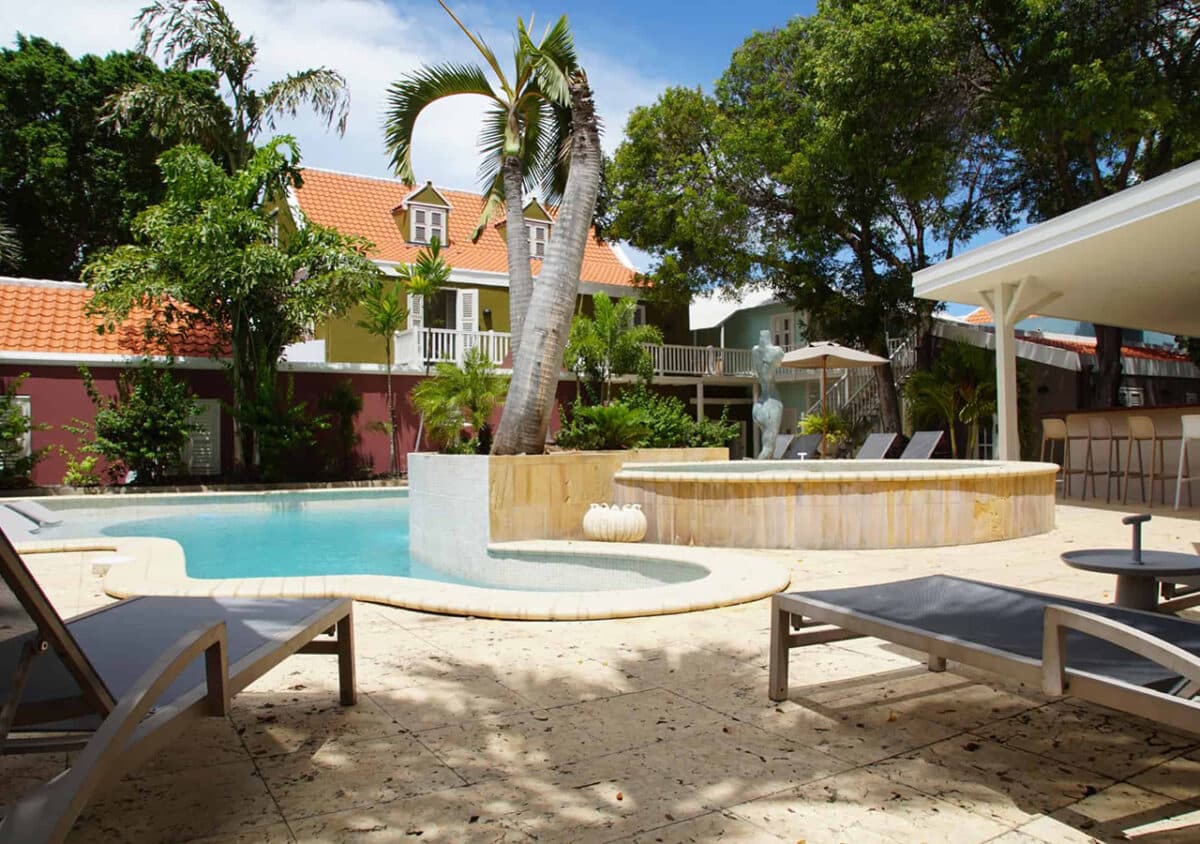If it takes a village to make a great vacation, you’ve come to the right place in Curacao’s Kura Botanica Hotel.
A boutique property with 46 recently refreshed rooms, the “new” Kura Botanica was carved out of the former Hotel Kura Hulanda, which shut down in the early 2010s. Adjacent to Curacao’s famous Kura Hulanda Museum, that 82-room property was broken into a mix of guest accommodations and private residences, with many of the historic streets and alleys that once comprised the larger hotel reimagined as the Kura Hulanda village.
The mixed-use hotel, residential, museum, dining, and shopping area has become the beating heart of Willemstad’s Otrabanda district, making the Kura Botanica an ideal base for exploring both this rising neighborhood and the entirety of Curacao’s capital city: the famous Queen Wilhelmina “Swinging” Bridge, which connects Otrabanda to the downtown Punda area, is just a five minute walk away.
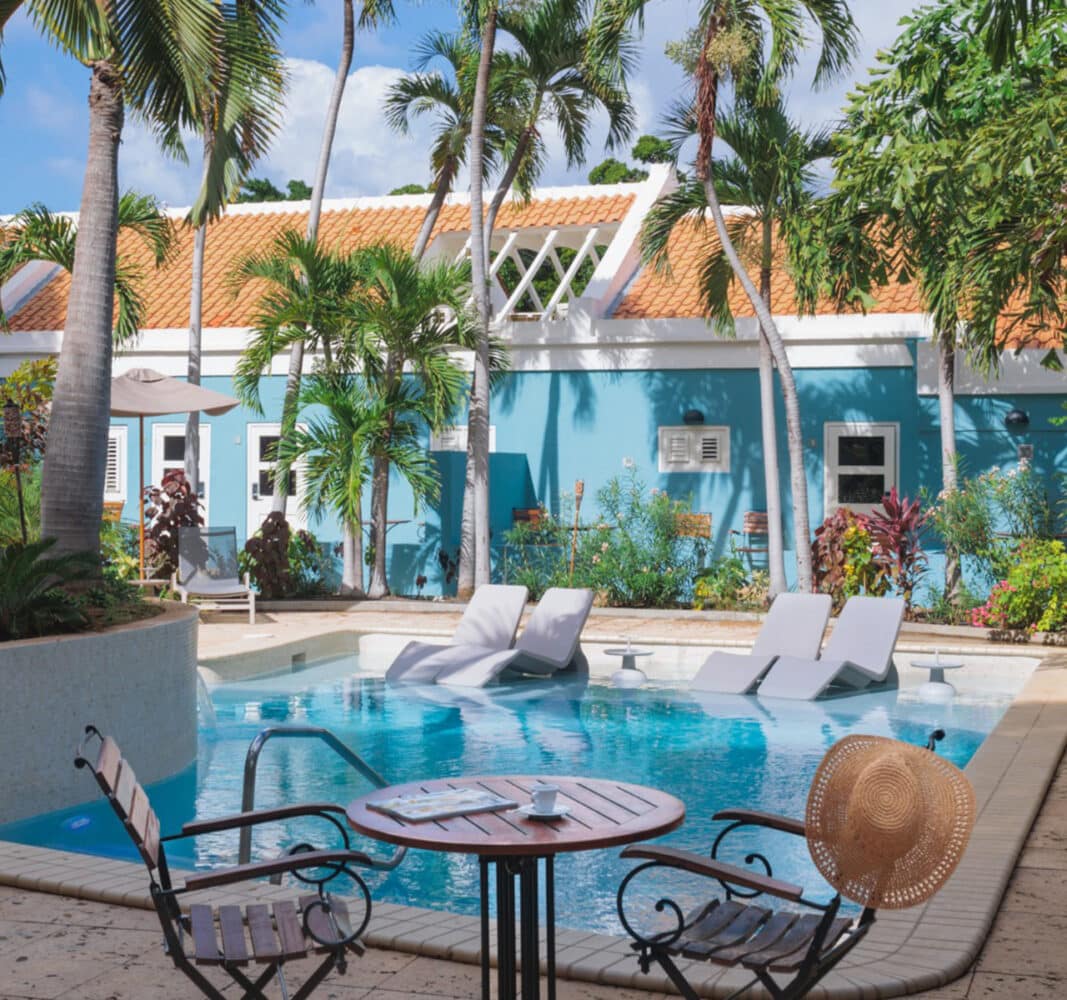
The Kura Botanica — the name translates to “botanical courtyard” —strikes an excellent balance between convenience and intimacy. Entered via a modest doorway in one of the Kura Hulanda village’s side streets, the lobby quickly opens onto a cloistered collection of guest rooms laid out around a private pool and bar, and three individual courtyards.
The accommodations are a mix of king rooms, junior suites, and full suites. Some upper floor rooms have views of the bridge and Punda, and several are themed to particular interests. For example, the Rum Suite is stocked with a selection of 30 rums from around the Caribbean, a fitness themed suite has a treadmill, dumbbells, and yoga mats, and an entertainment oriented suites has board games and video games. The top-of-the-line Royal Desire Suite is, shall we say, especially tailored for romantic stays.
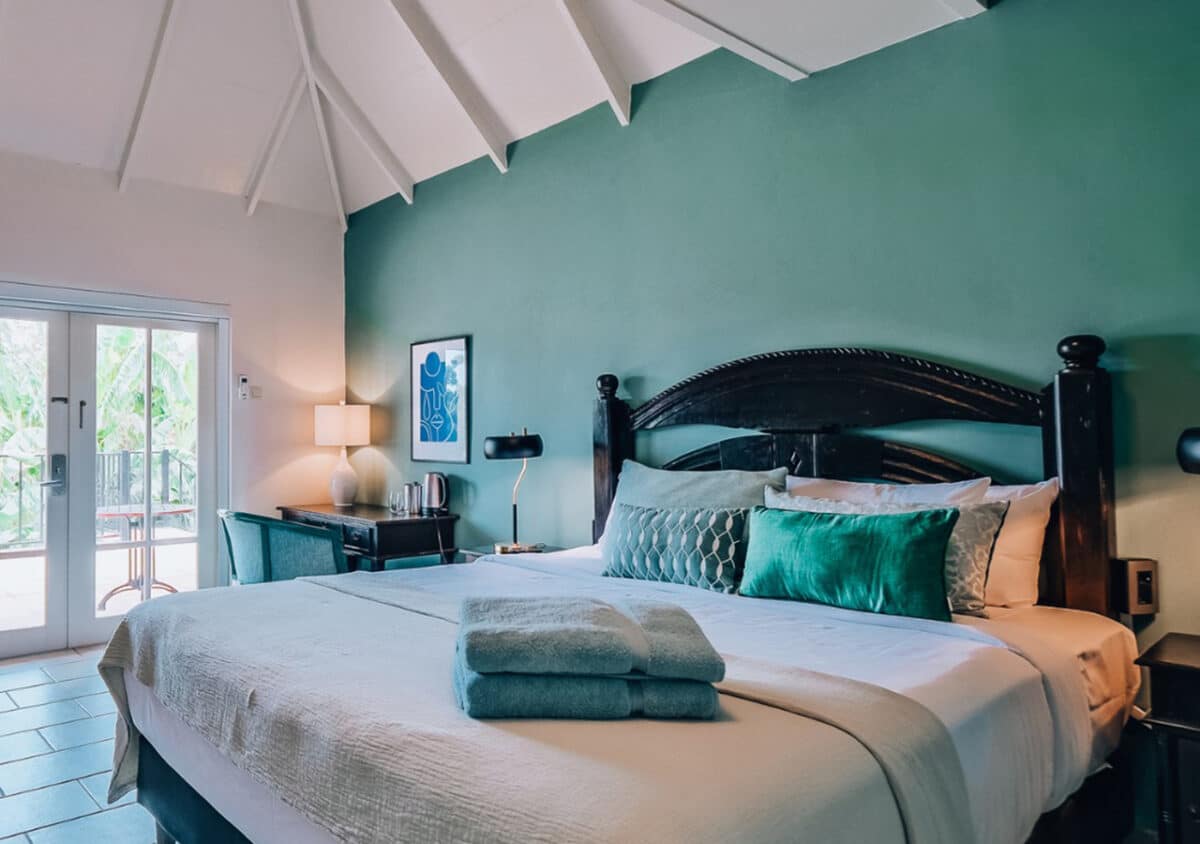
Guest rooms are all situated in former homes dating to the 18th century, and the courtyards are alive with 50 different species of palms, including a dense collection around the zero-entry pool and hot tub, lending credence to the hotel’s botanical garden namesake. Breakfast is served daily in the hotel’s bamboo garden, and weekly yoga classes are offered.
The Kura Botanica is a delightful village with multiple dining options, shops, and nightlife. A peaceful oasis in the morning, the Kura Hulanda village slowly comes to life as the hours pass, and by evening it’s a magical environment full of twinkling lights, the sounds of live music, and the soft din of conversation from the outdoor patios of the restaurants and bars.
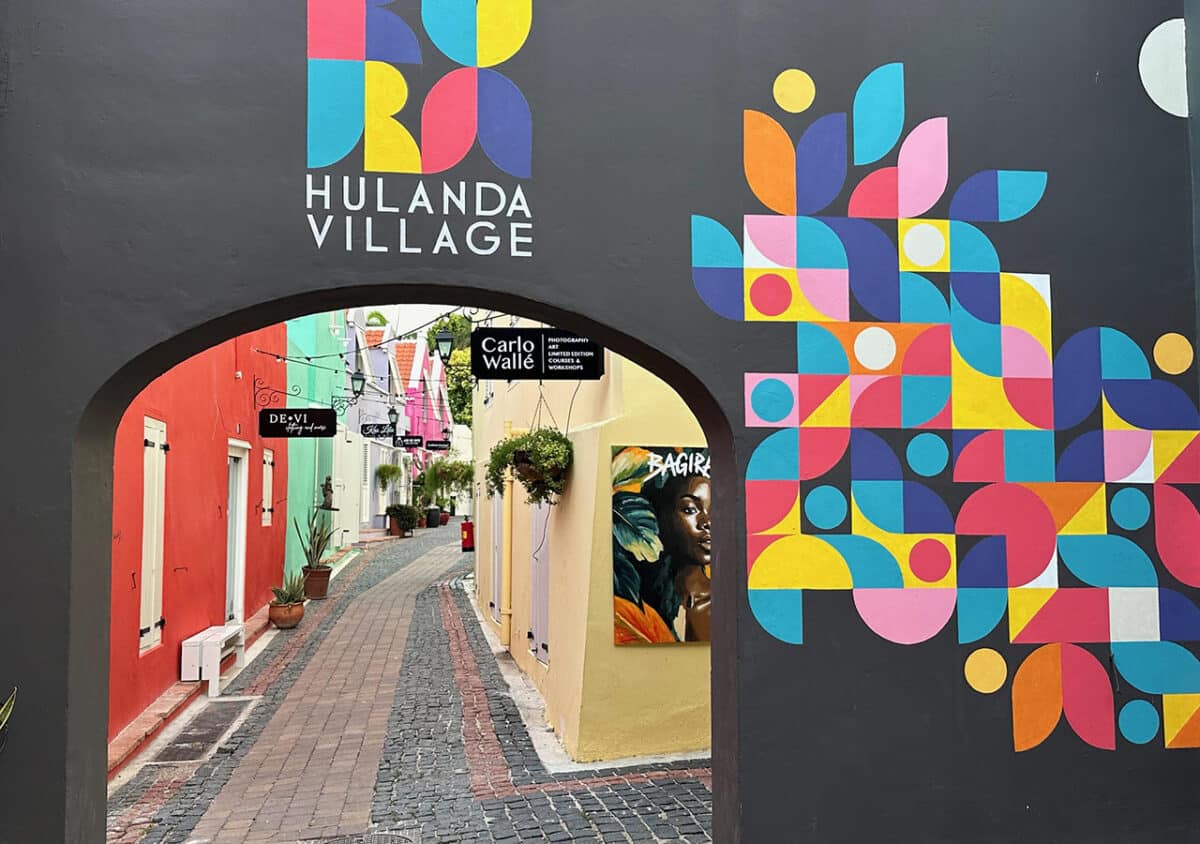
Part of Willemstad’s UNESCO World Heritage site, the village is comprised of pastel-painted buildings lining cobblestoned streets. Just a few doors down from the hotel is Il Gelato, a welcoming stop for a cold Italian treat on one of Curacao’s hot days; steps beyond brings you to the village’s central square, the heart of the action for dining and socializing.
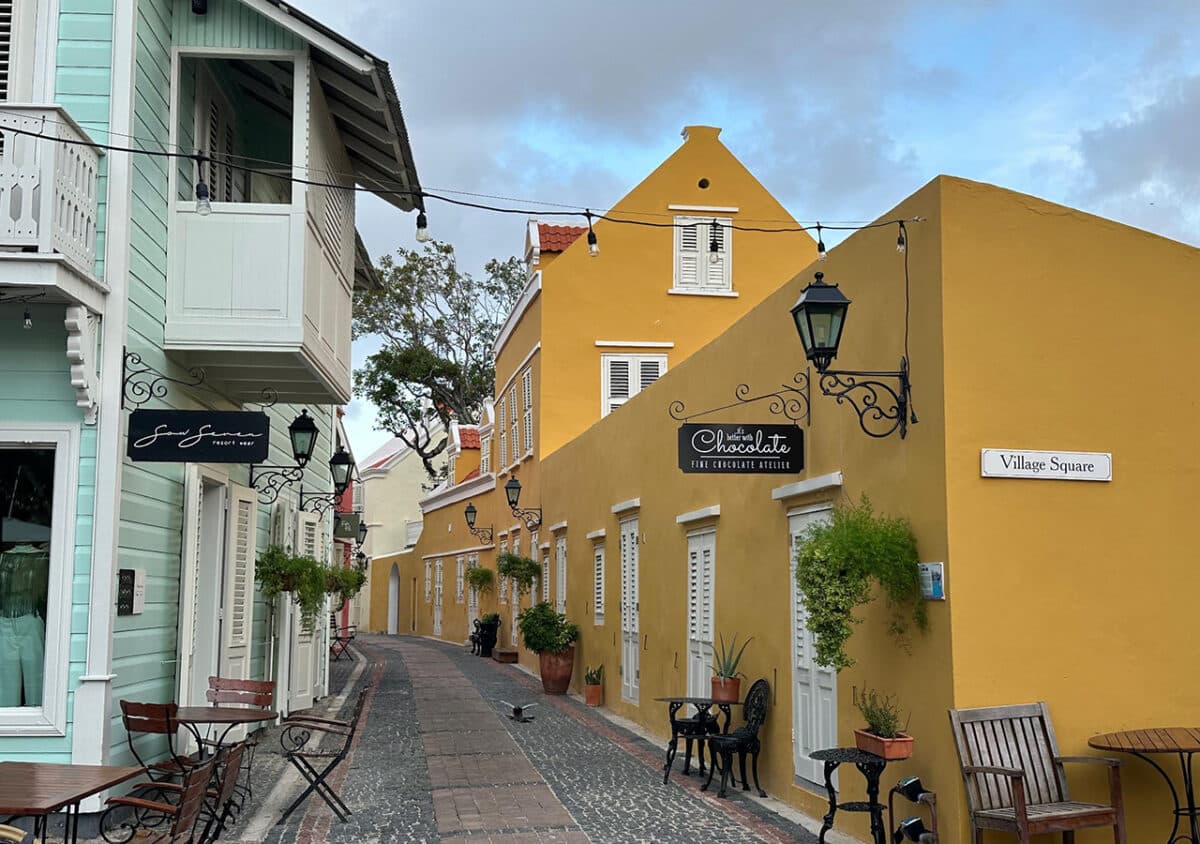
Dinner options include local cuisine at Rustiq Curacao; seafood for lunch at Lionfish Caribbean, a jewel store/restaurant with goods and meals made from the invasive lionfish; small bites at Flores Otrabanda; burgers and fries from Brgr Haus, and raw and grilled seafood and steaks at Caleo.
Restaurants stay open late, but the sounds of revelry never really reach the confines of the Kura Botanica hotel and rooms. Shops close earlier, with afternoon and early evening the best times to browse boutiques selling local chocolates, artwork, gifts, and clothing.
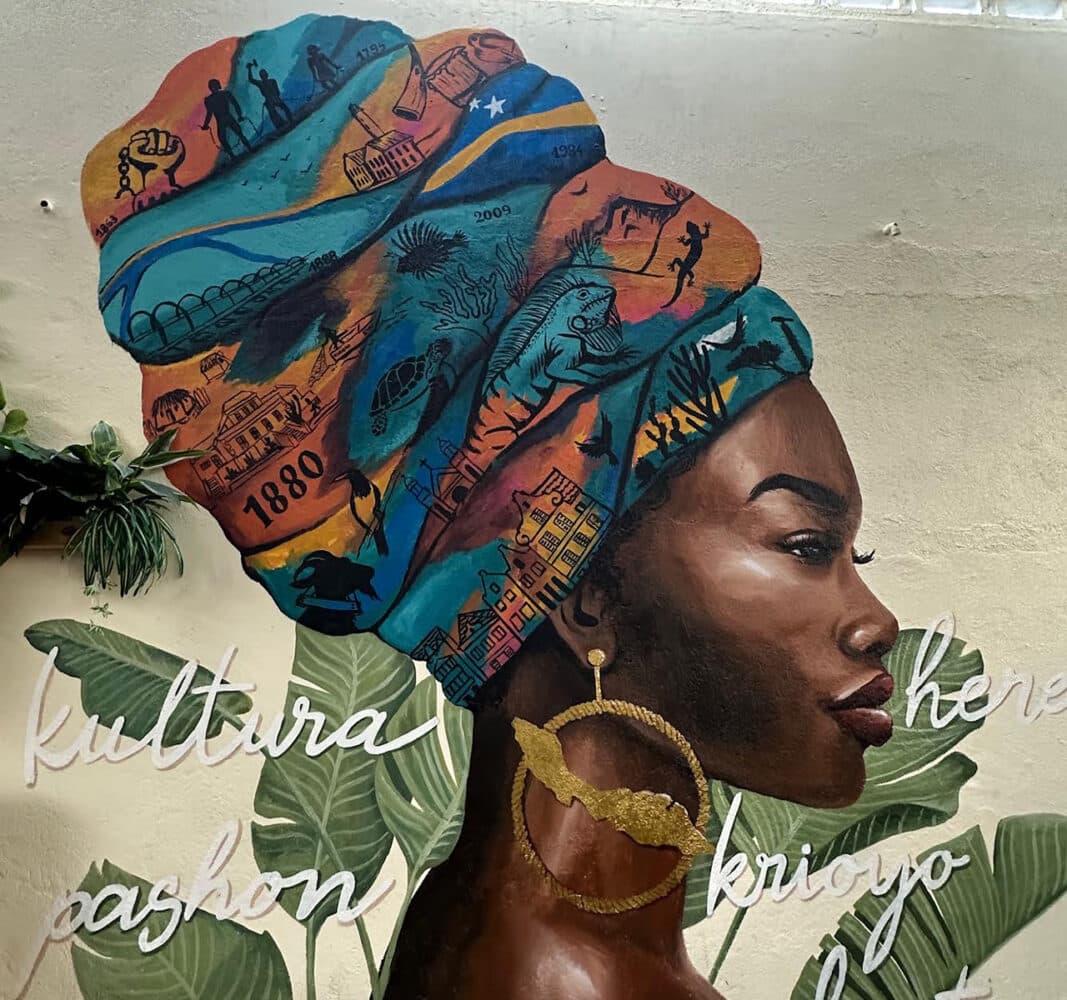
Located on the edge of the village is the Kura Hulanda Museum, an anthropological museum with a moving collection that focuses on the history of the African slave trade.
The museum, located in multiple buildings and courtyards, includes exhibits and artifacts covered a broad swath of Caribbean, African and American history — a story that is also told via artworks on public display throughout the Kura Hulanda village. The art show continues on the streets of Otrabanda, where dozens of houses and buildings are covered by bright murals painted by artists from around the world.
